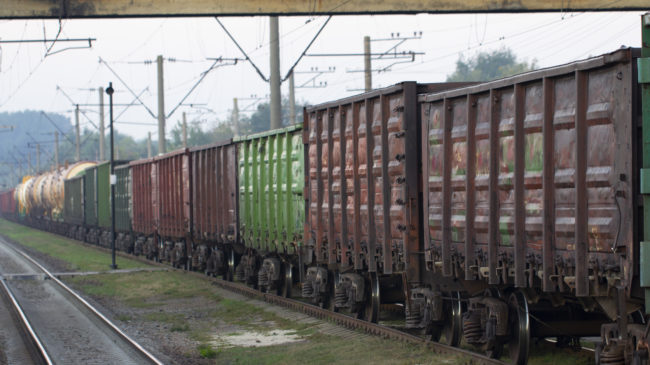The transportation sector has been hard hit by COVID-19 as people stay home and businesses idle. Freight has performed better than passenger travel, as people still need household goods, but even trucking and rail have seen significant declines as demand from many businesses dried up, more than offsetting the increase in online shopping orders. This transportation demand shock has led to a series of bailouts from Congress with more likely to come. Standing alone is the Class I freight rail industry, which has neither asked for nor received any COVID-19 bailouts. While a number of factors have given freight rail a stronger-than-average financial footing, chief among them is the positive legacy of partial deregulation from four decades ago.
After decades of heavy regulation by the Interstate Commerce Commission, America’s railroad industry was at death’s door by the 1970s. The rise of affordable automobiles and air travel made passenger rail unpopular and unprofitable. Growing competition from trucking led to reduced freight profitability for railroads, profits that had long been used to cross-subsidize mandated passenger service. In the 1960s, a wave of consolidation and diversification took hold in the industry, most notably by the Penn Central Transportation Company, but failed to stanch the decline. Capital investment and even basic maintenance ground to a halt, leading to nearly 50,000 miles of track operating at reduced speeds to minimize the safety risk posed by dilapidated infrastructure. In a sign of the times, railroads began tracking “standing derailments,” incidents where the severely deteriorated roadbed and track caused stationary railcars to tip over. Penn Central’s 1970 bankruptcy remained the largest corporate bankruptcy in U.S. history until it was eclipsed by Enron’s collapse in 2001.
Following Penn Central’s bankruptcy, lawmakers and regulators scrambled to save the industry. This effort initially birthed Amtrak to temporarily relieve private carriers from their mandated money-losing passenger operations and later Conrail to maintain freight rail access to the Northeast and Midwest. The outright nationalization of the industry began to be discussed. Fortunately, reformers in industry, academia, the Department of Transportation, and Congress chose a different path as mounting evidence supported the conclusion that freight rail’s woes were caused by excessive regulation. The bipartisan liberalization began with the passage of the Railroad Revitalization and Regulatory Reform Act of 1976 and went full-throttle with the Staggers Rail Act of 1980, which largely freed rail carriers and customers from rigid price controls and operating requirements.
The deregulatory reforms worked. During the last four decades, America’s private freight railroads have become profitable again, with traffic volumes up 90 percent, productivity up 150 percent, inflation-adjusted average shipping rates down 45 percent, and accidents down 80 percent. In recent years, freight railroads have been averaging $25 billion annually in network investment and their return on investment has risen from a two percent average during the 1970s to more than 10 percent during the 2010s. America’s freight rail industry went from facing an existential crisis to being the envy of the world in just a few decades.
The coronavirus pandemic has reduced road traffic by 40 percent, mass transit ridership by 80 percent, and passenger air travel by 95 percent. To date under the CARES Act, Congress has authorized bailouts of $54 billion for airlines, $10 billion for airports, and $25 billion for mass transit. Congress is beginning to debate another round of transportation sector bailouts, which may include tens of billions of dollars for state highway trust funds and a second multibillion-dollar bailout of mass transit systems. Some truckers are also seeking new regulation of freight brokerage fees in a misguided attempt to raise shipping rates that have cratered due to reduced demand.
Freight rail carriers have also seen large declines in traffic—more than 20 percent year-over-year—but they have eschewed government COVID-19 assistance. This is largely thanks to their relative financial health made possibly by partial deregulation. On recent earnings calls with investors, industry executives highlighted the resilience of the industry. “We believe BNSF has sufficient liquidity to continue business operations during this volatile period,” Berkshire Hathaway said.
Kansas City Southern’s “financial profile has never been stronger with ample liquidity and a favorable debt maturity schedule,” the company said as it reported record earnings for its first quarter of 2020.
“[Union Pacific] expects to maintain sufficient liquidity to sustain an extended period of lower volumes,” the company said in a press release.
These reassuring statements offer a rare bright spot in the stream of gloomy news coming out of the transportation sector during the pandemic.
It’s too early to tell what specific lessons can be drawn from the railroad industry’s robustness during the coronavirus pandemic. But it is clear that today’s freight railroads are still standing largely because lawmakers and regulators a generation ago recognized the power of markets and the dangers of excessive government intervention.

